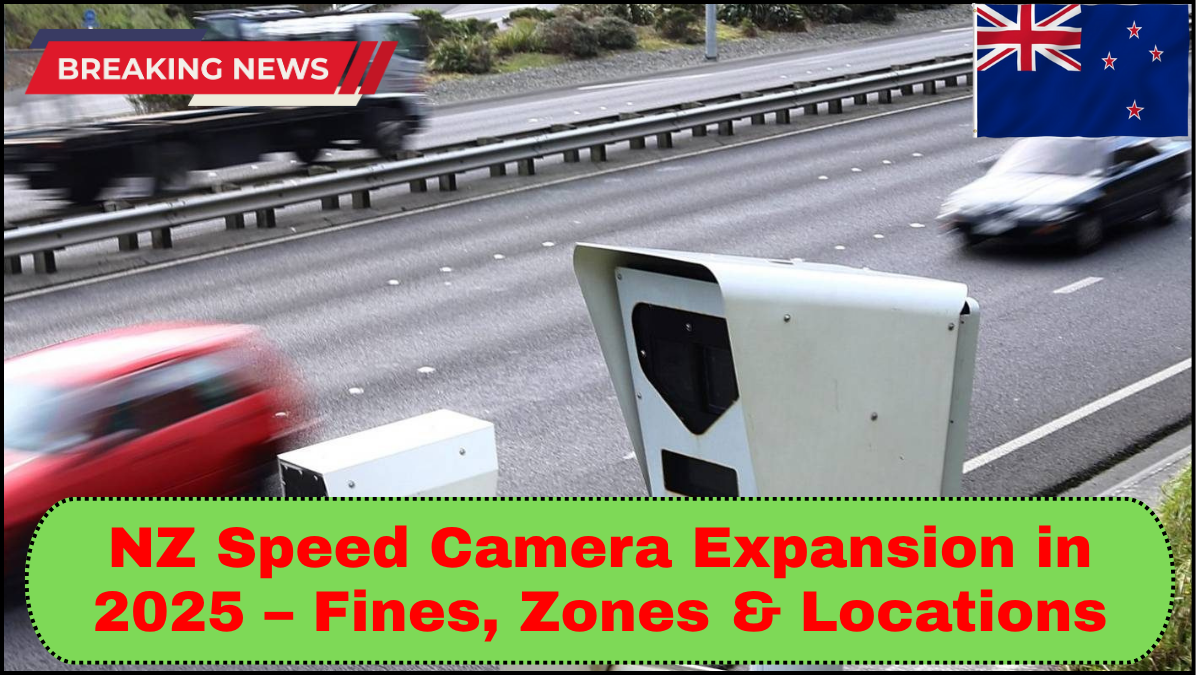In 2025, New Zealand is taking a tougher stance on road safety with a significant NZ Speed Camera Expansion. This nationwide upgrade isn’t just about catching speedsters—it’s a broader push to reduce accidents, improve driver behavior, and enforce consistent compliance across urban and rural roads.
Here’s everything you need to know about the changes, from new fine zones to expanded camera locations, and how it may impact drivers moving forward.

What’s Driving the Speed Camera Expansion?
New Zealand’s road safety strategy, known as Road to Zero, aims to eliminate road fatalities and serious injuries by 2050. One of the key tools in this strategy is speed enforcement.
According to Waka Kotahi NZ Transport Agency, excessive speed contributes to about a third of fatal crashes. In response, the government is increasing the number and coverage of speed cameras across the country, with an emphasis on both deterrence and enforcement.
The NZ Speed Camera Expansion 2025 includes:
-
Doubling the number of static speed cameras.
-
Introducing more mobile enforcement units.
-
Installing red-light speed cameras at high-risk intersections.
-
Repositioning outdated or underperforming units based on new traffic data.
Updated Fine Zones – What’s Changing?
As part of the expansion, fine zones are being reevaluated and redrawn. These zones determine the severity of penalties based on the speed limit of the road and the level of the speed violation.
Key changes include:
-
Tiered Fine Structures: The new fine system separates minor, moderate, and extreme speeding offenses. For example:
-
1–10 km/h over: Low-range fine, approx. $30–$50.
-
11–20 km/h over: Moderate fine, approx. $80–$150.
-
21+ km/h over: High-range fine, often over $300, with possible license suspension.
-
-
Dynamic Fines in School Zones: Speeds near schools are now closely monitored during start and end times. Fines in these zones are higher and enforced through time-based camera alerts.
-
Increased Penalties in High-Risk Areas: Roads with a history of fatal crashes, particularly rural highways, are now subject to stricter fine thresholds.
These fine zones are calibrated using real-time traffic data and crash statistics, allowing authorities to adjust enforcement levels based on risk.
New Camera Locations in 2025
The rollout of new camera locations under the NZ Speed Camera Expansion 2025 is extensive. While exact coordinates are not disclosed to prevent intentional avoidance, authorities have revealed key focus areas:
-
Urban Corridors: Busy streets in Auckland, Wellington, and Christchurch are getting additional fixed and mobile cameras, especially on multi-lane arterial routes.
-
High-Crash Intersections: Intersections with a history of red-light running and collisions will receive red-light speed cameras.
-
Tourist Routes: Popular scenic routes like State Highway 6 and 8 in the South Island will see new enforcement zones due to high tourist traffic and frequent speeding violations.
-
School and Residential Areas: To protect vulnerable road users, cameras are being placed near schools, parks, and dense residential neighborhoods.
The Ministry of Transport has partnered with local councils to align camera placement with community feedback and accident data.
Public Awareness and Driver Support
To ensure fairness and transparency, the government is launching a public awareness campaign alongside the camera rollout. This includes:
-
A national website where drivers can check current fine zones and active camera locations.
-
Email and SMS alerts for registered drivers with repeat infractions.
-
A grace period in early 2025 where warnings are issued instead of fines for first-time offenders in new zones.
Additionally, new signage will mark monitored zones, giving drivers clear advance notice.
Long-Term Impact on Road Safety
The government expects a measurable drop in speed-related crashes within the first year of implementation. Countries like Sweden and the UK have seen similar results with automated enforcement expansion, and NZ hopes to replicate that success.
With more eyes on the road—literally—compliance will likely increase, especially when drivers realize the system is consistent and data-driven.
Frequently Asked Questions (FAQ)
Q1: When will the NZ Speed Camera Expansion 2025 begin?
The rollout begins in phases starting July 2025, with full nationwide implementation expected by early 2026.
Q2: Can I appeal a fine from a new speed camera?
Yes, all camera fines can be appealed via the official Waka Kotahi website. You’ll need to provide evidence or explain mitigating circumstances.
Q3: Are mobile speed cameras included in the expansion?
Yes. The number of mobile camera units is being increased to provide flexible coverage, particularly on rural roads and highways.
Q4: Will GPS navigation apps show the new camera locations?
Third-party apps may update their databases based on official releases, but not all locations will be public for safety reasons.
Q5: What’s the goal of these changes?
To reduce deaths and serious injuries caused by speeding, as part of NZ’s Road to Zero strategy.
click here to learn more